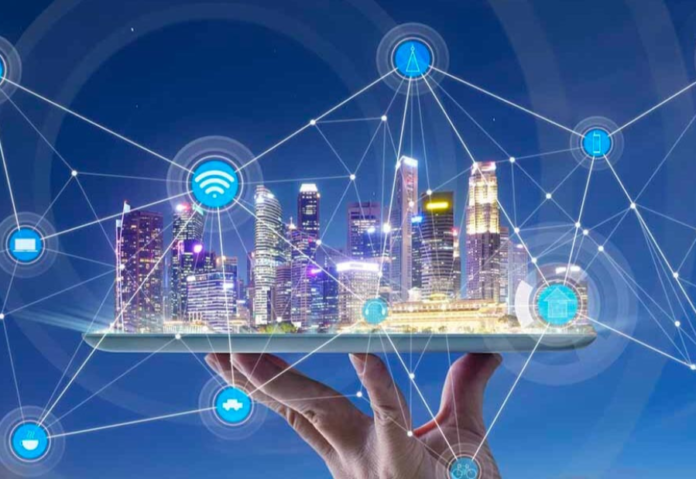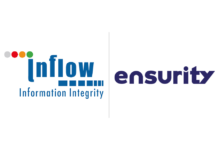Urban planning has been a priority for governments all around the world for ages. Nations have tried to improve smart city quality by constructing roads and transit infrastructure to improve connection, separating industrial and residential sectors, and making sure citizens can access all they need without having to travel far.
Governments now have a more advanced toolkit to create better cities because to the Internet of Things (IoT) and advancements in information technology. Simultaneously, these same technologies have altered how locals arrange their activities, communicate, and commute to work.
Governments throughout the world are investing in smart cities in order to efficiently utilize these technologies and to address the ever-changing difficulties that their citizens face.
What is a Smart City?
An metropolitan area that uses technology to improve the living and working conditions of its citizens is referred to as a “smart city.” The concept focuses on the outcome rather than on the precise technology or a city framework. Sustainability, connectivity, data-driven planning, and smart utility systems are common elements, yet there are significant disparities in how various governments or smart city initiatives define the outcome.
Instead of a full makeover, many implementations just take into account one or two elements of a smart city. For example, a city might install air pollution sensors, IoT-powered utility meters, sensor-enabled traffic signals, or a strong public transportation system.
As the name suggests, the majority of smart city ideas focus on leveraging technology to improve citizens’ quality of life. They frequently talk about sensors placed across the city to keep an eye on conditions and activities and take immediate action. A wide variety of automation for access control, traffic management, and other procedures is also covered in most designs.
Sustainability is also frequently given a lot of weight in smart cities. Many ideas talk about utilizing renewable resources, at least in part, to help the city meet its energy needs.
Numerous types of data from systems and environments can be gathered and processed by IoT systems. They can use this data to automate tasks and streamline procedures that keep a city functioning.
Here are five applications of IoT in a smart city.
Efficient energy management:
Smart cities can better control their energy needs with the aid of IoT systems. IoT sensors can help cities control their energy use by giving real-time insights into how much energy is being used in various systems.
Cities may create smart grids that distribute electricity effectively and efficiently while minimizing energy losses by utilizing the Internet of Things. Cities can use IoT to control utilities like gas and water in addition to power. It can assist in monitoring these utilities’ usage and improving their management. Smart utility meters created by an IoT development business can also help cities leverage the Internet of Things to streamline invoicing.
IoT-enabled more effective street lighting has already been used by numerous communities. These lights frequently have timers, motion and light sensors, and won’t turn on when they’re not needed.
Smooth and robust transportation systems:
A city’s transit systems can be made more efficient using the Internet of Things. The city can improve schedules and guarantee that cars arrive on time with the help of comprehensive sensor data.
Additionally, the city can improve its parking infrastructure. For example, London installed a smart parking system that displays adjacent parking spots to cars. The city decreased traffic by lowering the number of vehicles circling in search of a parking space.
For transportation projects, IoT technology can also automate toll collecting. RFID toll collecting technologies can improve the experience for both drivers and passengers, yet manual toll collection frequently results in significant congestion.
Effective waste management:
The majority of cities’ waste management systems are inefficient with regard to energy and resources. Cities invest a lot of money in gathering, sorting, and getting rid of waste from residences and other residential structures.
IoT systems can assist cities in developing more efficient rubbish collection plans. They can also avoid unscheduled downtime and guarantee that the various waste disposal devices are in good working order.
Access management:
To guarantee the safety and security of local citizens and property, a strong access management system is essential. Patrol teams and security officers can be helpful, but they require a lot of resources and aren’t always particularly successful.
Smart cities can improve the safety of its citizens and their property by integrating security teams with IoT-based access management and security solutions. They can also significantly automate safety and lower manpower needs.
Environment monitoring systems:
To keep the residents safe, IoT sensors may monitor the environment for pollutants and dangerous materials and send out notifications. Based on pollution data, they can regulate indoor air purifiers to keep inhabitants safe without raising energy costs.
The city can create long-term plans and procedures for pollution control with the data from these environmental monitoring systems.
Benefits of Using IoT in Smart Cities
For both city officials and citizens, utilizing IoT in smart cities has numerous benefits. Here’s an example of how IoT-powered smart city solutions could transform city life:
Enhanced Operational Visibility with IoT Remote Monitoring:
With its ability to provide detailed information and insights into city operations, IoT sensors serve as a smart city’s eyes and ears. Consider identifying regions with the highest pollution levels or garbage collection inefficiencies. Officials are able to pinpoint bottlenecks and make well-informed decisions for improvement because to this real-time data.
Data-Driven Decision-Making and Planning:
No more speculating! The needs of the city are clearly depicted by IoT data. In order to make data-driven decisions, officials might examine energy usage, traffic patterns, and other important variables. Do you have a difficulty with traffic congestion? IoT-enabled traffic management systems help optimize public transportation timetables and routes.
An Elevated Resident Experience with IoT-Based Smart City Solutions:
Imagine living in a city that meets your demands! The lives of citizens in smart cities can be greatly enhanced by IoT applications. You can discover parking spaces more quickly with smart parking systems, and you can stay informed with real-time air quality monitoring.
The Future IoT and Smart Cities: A Glimpse Ahead
IoT has enormous and ever-expanding potential in smart cities. The following are some fascinating prospects that lie ahead:
- Predictive Maintenance:Real-time infrastructure health monitoring using IoT sensors allows for proactive maintenance and minimizes downtime. Imagine structures like bridges and buildings that can identify possible problems before they become serious ones.
- Smart Grids:By integrating renewable energy sources and decreasing dependency on fossil fuels, advanced IoT systems can optimize energy distribution throughout the city. A more resilient and sustainable energy grid is made possible by this.
- Personalized City Experiences:Residents can customize their city experience via IoT. Imagine buildings that automatically alter the temperature for maximum comfort or traffic lights that change according to your preferences.
Innovation abounds in the IoT and smart city future. Cities can build a more sustainable, efficient, and citizen-focused future for everybody by utilizing the Internet of Things.






